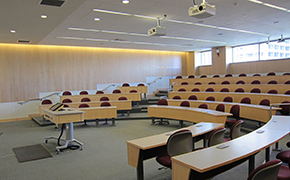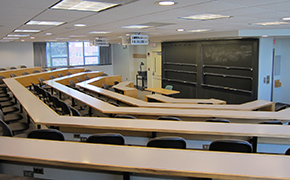This Course at MIT pages are part of the OCW Educator initiative, which seeks to enhance the value of OCW for educators.
Course Overview
This page focuses on the course 15.060 Data, Models, and Decisions as it was taught by Professors Robert Freund, Juan Pablo Vielma and Cynthia Rudin in Fall 2014.
This course introduces first-year Sloan master’s students to the fundamental tools and techniques of using data to make informed management decisions. It covers introductory probability, decision analysis, basic statistics, regression, simulation, linear and nonlinear optimization, and discrete optimization. Students study computer spreadsheet exercises, cases, and examples drawn from marketing, finance, operations management, and other management functions.
Course Outcomes
Course Goals for Participants
Students who complete the course will be able to:
- understand fundamental concepts most important for the practical analysis of management decisions and the dynamic nature of decision-making
- evaluate uncertainty explicitly
- use historical data and limited information effectively
- simulate complex systems
- optimally allocate resources
- utilize spreadsheet models
Possibilities for Further Study/Careers
This course covers tools that are required for successful management decisions.
Several faculty members have contributed to developing 15.060 Data, Models, and Decisions. In the following pages, Professors Robert Freund and Georgia Perakis discuss their experiences shaping and teaching this core MBA course.
…the course has to be designed so that the faculty would really enjoy teaching it.. [and] to accommodate the different teaching styles of the different faculty instructors."
—Robert Freund
- Factors Influencing the Design of the Course
- Different Audiences, Different Learning Goals
- Offering a Menu of Ways to Learn
- Using Case Studies
- Developing Case Studies with Students
- Collaborating and Iterating From Year to Year
Curriculum Information
Prerequisites
Permission of the instructor
Requirements Satisfied
Required for first-year Sloan MBA students
Offered
Every fall semester
Assessment
The students' grades were based on the following activities:
 40% Final exam
40% Final exam 30% Case write-ups and homework assignments
30% Case write-ups and homework assignments 20% Quiz
20% Quiz 10% Class participation
10% Class participationStudent Information

Breakdown by Year
All students were first-year Sloan master’s students.
Typical Student Background
Students enter this course with a variety of wide-ranging backgrounds.
During an average week, students were expected to spend at least 9 hours on the course, roughly divided as follows:
In Class
- Lectures met 2 times per week for 90 minutes per session; 21 sessions total; mandatory attendance.
- Recitations met 1 time per week for 1 hour per session; optional attendance.
- Some lecture sessions were didactic, others relied heavily upon interactive discussion within the class, as well as cold-calling, especially when discussing case studies.
- Recitation periods were used to review and reinforce material covered in the lectures, and to review the ins and outs of using modeling software for the course. Recitations were run by the Teaching Assistants.
Out of Class
Students prepared readings, team and individual cases and write-ups, individual homework assignments, and studied for exams outside of class.
Semester Breakdown
| WEEK | M | T | W | Th | F |
|---|---|---|---|---|---|
| 1 |  |  |  |  |  |
| 2 |  |  |  |  |  |
| 3 |  |  |  |  |  |
| 4 |  |  |  |  |  |
| 5 |  |  |  |  |  |
| 6 |  |  |  |  |  |
| 7 |  |  |  |  |  |
| 8 |  |  |  |  |  |
| 9 |  |  |  |  |  |
| 10 |  |  |  |  |  |
| 11 |  |  |  |  |  |
| 12 |  |  |  |  |  |
| 13 |  |  |  |  |  |
| 14 |  |  |  |  |  |
| 15 |  |  |  |  |  |
| 16 |  |  |  |  |  |
 No classes throughout MIT
No classes throughout MIT Lecture session
Lecture session Teamwork session
Teamwork session Assignment due date
Assignment due date Exam
Exam No class session scheduled
No class session scheduled Recitation session
Recitation session Final exam review sesion (Saturday)
Final exam review sesion (Saturday) Quiz
Quiz

 Room 1 of 2
Room 1 of 2 
